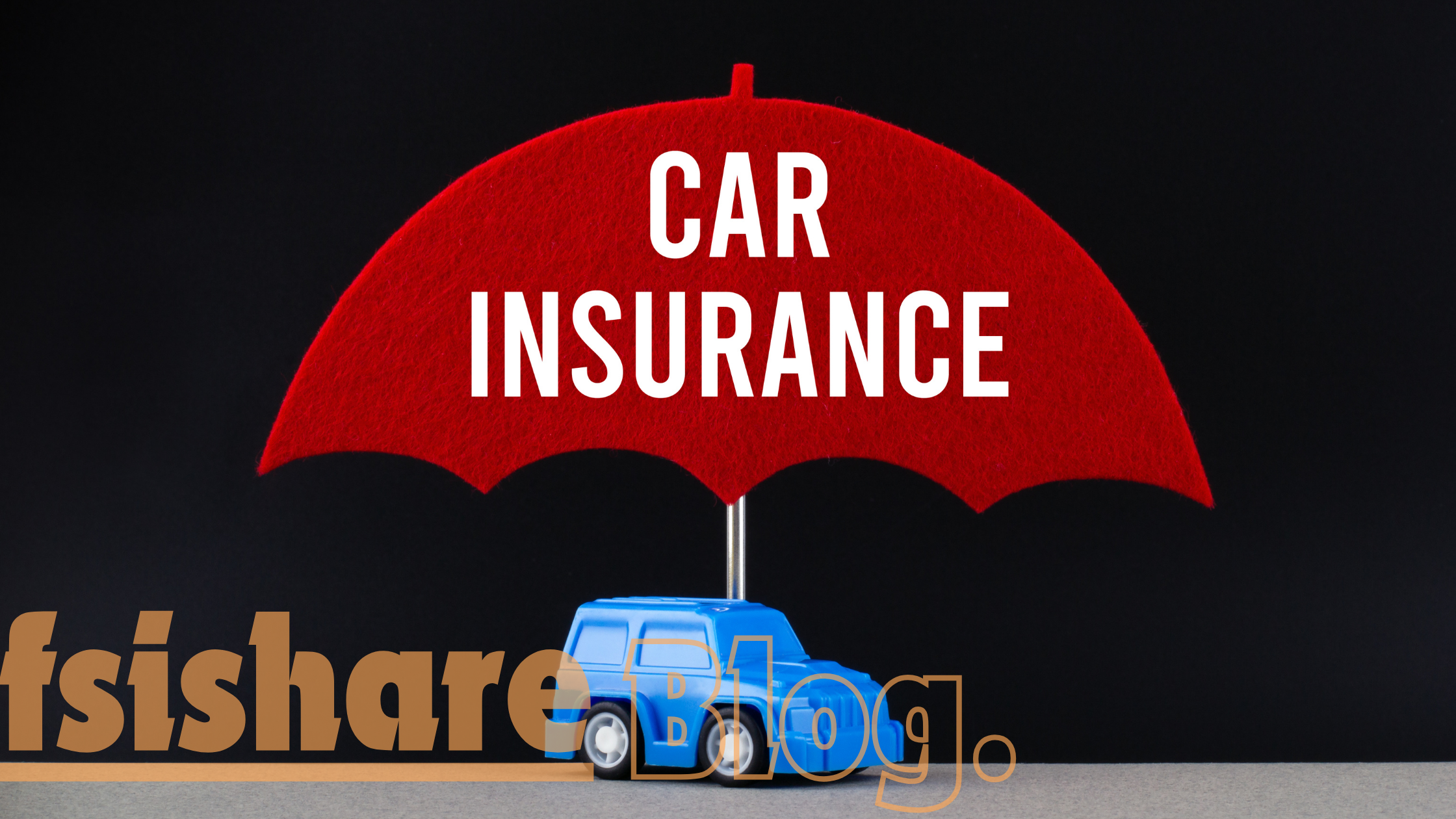Finding Full Coverage Car Insurance

ADVERTISEMENT
Introduction
Securing full coverage car insurance is essential for comprehensive protection on the road. This guide will help you understand the different aspects of full coverage car insurance, factors affecting premiums, and how to compare quotes effectively to find the best options.
Table of Contents
- Understanding Full Coverage Car Insurance
- Types of Coverage in Full Coverage Car Insurance
- Factors Influencing Car Insurance Premiums
- Steps for Accurate Car Insurance Quotes
- Comparing Car Insurance Policies
- Benefits of Multiple Car Insurance Quotes
- Top Providers for Full Coverage Car Insurance
- Tips for Lowering Your Car Insurance Premiums
- Common Myths About Car Insurance
- FAQs About Full Coverage Car Insurance
- Conclusion
1. Understanding Full Coverage Car Insurance
ADVERTISEMENT
Full coverage car insurance includes both liability and comprehensive coverage, ensuring that you are protected in various scenarios. It is designed to provide financial protection against physical damage and bodily injury resulting from traffic collisions and other incidents.
Key Points:
- Comprehensive Protection: Covers a wide range of incidents.
- Peace of Mind: Provides assurance that you are financially protected.
- Required by Lenders: Often required for financed vehicles.
2. Types of Coverage in Full Coverage Car Insurance
Full coverage car insurance typically includes several different types of coverage to ensure comprehensive protection.
a. Liability Insurance
Covers damages and injuries you cause to others in an accident. It is required by law in most states.
- Bodily Injury Liability: Covers medical expenses and legal fees if you are at fault.
- Property Damage Liability: Covers the cost of repairing or replacing the other party’s vehicle or property.
b. Collision Insurance
Covers damages to your vehicle resulting from a collision with another car or object.
- Coverage: Repairs or replacement of your car after an accident.
- Deductible: The amount you pay out-of-pocket before the insurance kicks in.
c. Comprehensive Insurance
Covers damages to your car caused by events other than collisions, such as theft, vandalism, or natural disasters.
- Coverage: Non-collision-related damages.
- Deductible: The amount you pay out-of-pocket before the insurance kicks in.
d. Uninsured/Underinsured Motorist Coverage
Protects you if you are involved in an accident with a driver who has no insurance or insufficient coverage.
- Uninsured Motorist: Covers your expenses if the other driver has no insurance.
- Underinsured Motorist: Covers the gap if the other driver’s insurance is insufficient.
e. Medical Payments Coverage
Covers medical expenses for you and your passengers after an accident, regardless of who is at fault.
- Coverage: Medical expenses, hospital visits, and surgery costs.
- No-Fault: Pays out regardless of who is at fault.
3. Factors Influencing Car Insurance Premiums
Several factors influence the cost of full coverage car insurance premiums. Understanding these can help you get more accurate estimates.
a. Driving Record
Your driving history significantly impacts your insurance premiums. A clean record typically results in lower rates.
- Accidents: Increase your premiums.
- Traffic Violations: Speeding tickets and other violations can raise your rates.
b. Vehicle Type
The make, model, and age of your vehicle affect your insurance costs.
- Newer Cars: Higher premiums due to higher repair costs.
- Luxury Vehicles: More expensive to insure.
c. Location
Where you live also plays a role in determining your car insurance premiums.
- Urban Areas: Higher rates due to increased risk of accidents and theft.
- Rural Areas: Generally lower rates.
d. Coverage Level
The amount and type of coverage you choose impact your premiums.
- Higher Coverage: More expensive.
- Lower Deductibles: Increase premiums.
e. Credit Score
In many states, insurance companies use your credit score to help determine your premium.
- Good Credit: Lower premiums.
- Poor Credit: Higher premiums.
4. Steps for Accurate Car Insurance Quotes
To get the most accurate full coverage car insurance quotes, follow these steps:
a. Gather Necessary Information
Have the following information ready before you request quotes:
- Personal Information: Name, address, and contact details.
- Vehicle Information: Make, model, year, VIN.
- Driving History: Accidents, violations, insurance claims.
- Coverage Needs: Types and levels of coverage you want.
b. Use Online Tools
Online tools can provide multiple quotes quickly and easily.
- Comparison Websites: Use sites like Insurify, The Zebra, and Policygenius.
- Input Information: Enter your details to get quotes from various providers.
c. Contact Agents
Speaking with insurance agents can help you get personalized quotes and understand your options better.
- Local Agents: Visit or call local insurance agencies.
- Independent Agents: Work with agents who can provide quotes from multiple companies.
d. Review and Compare
Carefully review the details of each quote to ensure you are comparing similar coverage levels and terms.
- Consistency: Compare quotes with the same coverage amounts and deductibles.
- Discounts: Check for available discounts and how they affect premiums.
5. Comparing Car Insurance Policies
When comparing full coverage car insurance policies, consider the following factors to ensure you choose the best option.
a. Coverage Limits
Ensure each policy offers the desired coverage amount for liability, collision, comprehensive, and other coverages.
- Adequate Coverage: Verify that the policy meets your financial needs.
b. Deductibles
Compare the deductible amounts and how they affect your premiums.
- Balance: Choose a deductible that fits your budget and risk tolerance.
c. Premiums
Look at the premium amounts and payment options (monthly, quarterly, annually).
- Affordability: Choose a premium that fits your budget.
d. Discounts
Identify available discounts and see how they affect your premiums.
- Savings: Potential for significant premium reduction.
e. Insurer Reputation
Research the financial stability and customer service reputation of each insurer.
- Ratings: Check ratings from agencies like A.M. Best and J.D. Power.
- Customer Reviews: Look for feedback on customer service and claims handling.
6. Benefits of Multiple Car Insurance Quotes
Obtaining multiple full coverage car insurance quotes offers several advantages.
a. Cost Savings
Comparing quotes can help you find the best rates and save money on premiums.
- Savings: Lower premiums through comparison.
b. Better Coverage
Finding a policy that offers better coverage for your needs ensures comprehensive protection.
- Protection: Adequate coverage for peace of mind.
c. Informed Decision
Understanding different policies and their features helps you make a more informed choice.
- Knowledge: Make decisions based on thorough comparisons.
d. Access to Discounts
Identifying available discounts can further reduce your premiums.
- Savings: Take advantage of all eligible discounts.
7. Top Providers for Full Coverage Car Insurance
Several insurance companies are known for offering excellent full coverage car insurance policies. Here are some top providers to consider:
a. State Farm
Overview: One of the largest and most well-known insurance agencies in the USA, offering a wide range of car insurance products.
- Strengths: Comprehensive coverage options, strong financial stability, excellent customer service.
- Customer Satisfaction: High ratings for claims handling and customer support.
b. Geico
Overview: Known for its competitive rates and extensive coverage options, including online tools and mobile app support.
- Strengths: Affordable premiums, user-friendly digital tools, strong customer service.
- Customer Satisfaction: High ratings for ease of use and customer support.
c. Progressive
Overview: Offers a variety of car insurance products with innovative tools like the Name Your Price tool and Snapshot program.
- Strengths: Flexible coverage options, innovative pricing tools, strong financial ratings.
- Customer Satisfaction: High ratings for policy flexibility and customer support.
d. Allstate
Overview: Provides a broad range of insurance products and has a strong reputation for customer service.
- Strengths: Wide range of coverage options, strong financial ratings, excellent customer support.
- Customer Satisfaction: High ratings for claims processing and customer service.
e. USAA
Overview: Offers insurance primarily to military members and their families, known for its excellent customer service and comprehensive coverage options.
- Strengths: Exceptional customer service, competitive rates, tailored coverage for military members.
- Customer Satisfaction: Consistently high ratings for customer satisfaction and claims handling.
8. Tips for Lowering Your Car Insurance Premiums
There are several strategies you can use to find the best car insurance rates.
a. Shop Around
Compare quotes from multiple insurers to find the best rates and coverage options.
- Comparison Tools: Use online tools to compare policies.
b. Take Advantage of Discounts
Look for discounts such as safe driver discounts, multi-policy discounts, and good student discounts.
- Savings: Potential for significant premium reduction.
c. Maintain a Good Credit Score
A good credit score can lead to lower insurance premiums.
- Credit-Based Insurance Score: Used by insurers to determine risk.
d. Increase Your Deductible
Raising your deductible can lower your monthly premium, but be sure you can afford the higher out-of-pocket cost if you need to file a claim.
- Higher Deductible: Lower premiums.
e. Bundle Policies
Many insurance companies offer discounts if you bundle multiple policies, such as home and auto insurance.
- Savings: Potential for significant discounts.
9. Common Myths About Car Insurance
There are many misconceptions about car insurance. Here, we debunk some of the most common myths.
a
. All Policies are the Same
Car insurance policies vary widely in terms of coverage, benefits, and cost. Comparing policies helps you find the best one for your needs.
b. The Cheapest Policy is Always the Best
The cheapest policy may not provide adequate coverage. It’s essential to balance cost with the level of protection offered.
c. Comparing Quotes is Time-Consuming
With online tools and insurance agents, comparing quotes can be quick and easy.
d. My Current Insurer Will Always Offer the Best Rate
Loyalty to one insurer doesn’t guarantee the best rate. Regularly compare quotes to ensure you’re getting the best deal.
e. Discounts are the Same Everywhere
Different insurers offer different discounts. Comparing policies helps you identify all available savings.
10. FAQs About Full Coverage Car Insurance
a. How Can I Compare Full Coverage Car Insurance Quotes?
Use online comparison tools, speak with insurance agents, and gather multiple quotes to compare coverage and rates.
b. What Factors Should I Consider When Comparing Car Insurance?
Consider coverage limits, deductibles, premiums, discounts, insurer reputation, and policy features.
c. How Often Should I Compare Car Insurance Quotes?
It’s a good idea to compare quotes annually or whenever your policy is up for renewal.
d. Can I Switch Car Insurance Mid-Policy?
Yes, you can switch car insurance policies mid-term, but check for any cancellation fees or penalties.
e. Will Comparing Car Insurance Quotes Affect My Credit Score?
Most insurance quote comparisons involve a soft credit check, which does not affect your credit score.
11. Conclusion
Obtaining and comparing full coverage car insurance quotes is essential for finding the best coverage and rates to suit your needs. By understanding the different types of coverage, factors affecting premiums, and strategies for comparing quotes, you can make informed decisions and secure the best possible protection. Stay informed about changes in the car insurance landscape and use comparison tools to manage your policy effectively.
By following this comprehensive guide, you’ll be well-equipped to navigate the complexities of full coverage car insurance and find the best coverage for your needs. Drive safely and stay protected.
ADVERTISEMENT


